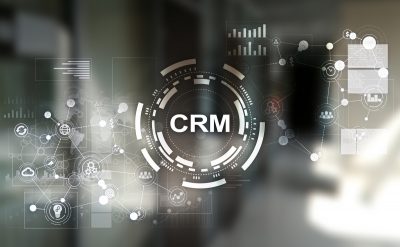The adoption of marketing technologies by companies requires overcoming many challenges, such as defining a framework for collecting and using the data. A necessary passage both technologies are essential for the marketer. Technologies are for the marketer as the air they breathe: indispensable and ubiquitous. As such, investment in technologies and associated skills is a key factor for success and differentiation for the fastest. But how far does it go? Marketers are turning to technologies to achieve their goals and this is not new, but the trend is now less to adopt specific technologies than to consolidate these tools into an integrated package.
For this, the marketer makes his market in the huge catalog of “Martech”, marketing technologies, to build his Martech stack. The figures are right because according to the Digital Intelligence Briefing, companies with a set of coherent and integrated technologies are 50% more likely to perform better than those who adopt (or undergo) a fragmented approach. To do this, the adoption of Martech and the construction of the technology stack of the company require overcoming many challenges, starting with the fact of not knowing where to start. According to a study by Gartner, an average company uses 22 platforms or Martech tools and 8 others are in the process of being implemented. Yet only 3% of marketing experts believe they are taking full advantage, while a strategy, analysis systems and training better optimized would help them make the most of these famous Martech batteries.
From Data to Resistance to Change at the heart of this question lies the data. Companies have to face the explosion of their volumes, the approximation of their quality, the arrival of analytics, artificial intelligence and regulations that are getting thicker – we think in particular of the European GDPR, but other countries or states, like California, follow European legislators. This is not done to fix the work of the marketer, often faced alone with these questions. In addition, the divisions and their regional variations are reluctant to invest in marketing technologies and solutions as a priority. Marketing works with a vision, a roadmap, an investment plan and a return on investment (ROI), but it can face the resistance to change, a natural phenomenon that hinders the adoption of new processes.
Access to Martech is slowed down. In the process, projects suffer from long response times for customer data that is not relevant and accurate. This usually requires starting a Martech project from the perspective of the quality of the data, its completeness and how it was collected respecting the choice of consumers. Opportunities under the influence If the opportunities offered by the Martech are numerous, the slowness of the internal adoption limits the effects, in particular in companies which have not sufficiently rotated towards the digital and/or whose complexity of internal organization and size can be brakes. The company’s customers also have a strong influence on projects: B2C (business to consumer) companies are quicker at exploiting Martech than B2B companies (business to business), which have less opportunities for collecting and data activation, and on the other hand a high level of demand from their customers, experienced in the customs and customs of the business world.
Let’s not forget either the sea serpent of the skill. The opportunities offered by the Martech are based on the technological know-how of the company. This problem goes both ways: on the one hand, companies suffer from the existing, cumbersome legacy (computer legacy), inherited from years of investment in solutions now considered heavy and sometimes obsolete. On the other hand, the problem often comes from anarchy, an adoption of Martech without the project, the rhythm of needs, with the risk of facing a gas plant, where the marketer does not know who is at the origin of such service and who has the competence if it exists. To overcome the challenges of Martech, marketers must first understand the potential of data-driven initiatives before clearly defining a strategy and framework for collection and use.
This work provides a solid foundation for demonstrating end-to-end ROI to gain support from the business’s hierarchy and trades, to focus on the customer experience and refine it using Martech. In the end, integrated Martech platforms will quickly become a prerequisite for successful marketing and business.
For more information, you can download our latest Whitepapers.













